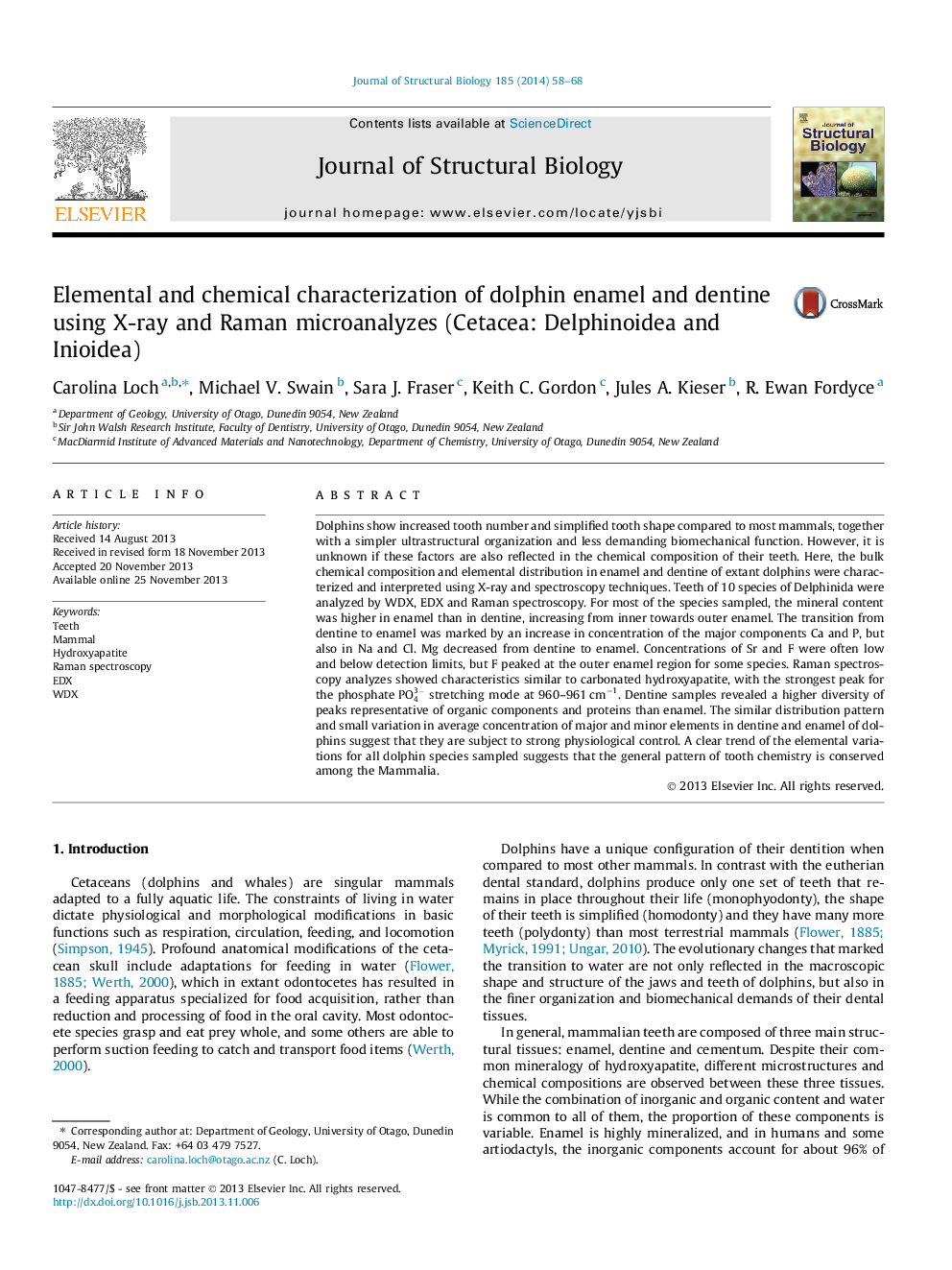| Article ID | Journal | Published Year | Pages | File Type |
|---|---|---|---|---|
| 5914197 | Journal of Structural Biology | 2014 | 11 Pages |
Abstract
Dolphins show increased tooth number and simplified tooth shape compared to most mammals, together with a simpler ultrastructural organization and less demanding biomechanical function. However, it is unknown if these factors are also reflected in the chemical composition of their teeth. Here, the bulk chemical composition and elemental distribution in enamel and dentine of extant dolphins were characterized and interpreted using X-ray and spectroscopy techniques. Teeth of 10 species of Delphinida were analyzed by WDX, EDX and Raman spectroscopy. For most of the species sampled, the mineral content was higher in enamel than in dentine, increasing from inner towards outer enamel. The transition from dentine to enamel was marked by an increase in concentration of the major components Ca and P, but also in Na and Cl. Mg decreased from dentine to enamel. Concentrations of Sr and F were often low and below detection limits, but F peaked at the outer enamel region for some species. Raman spectroscopy analyzes showed characteristics similar to carbonated hydroxyapatite, with the strongest peak for the phosphate PO43- stretching mode at 960-961Â cmâ1. Dentine samples revealed a higher diversity of peaks representative of organic components and proteins than enamel. The similar distribution pattern and small variation in average concentration of major and minor elements in dentine and enamel of dolphins suggest that they are subject to strong physiological control. A clear trend of the elemental variations for all dolphin species sampled suggests that the general pattern of tooth chemistry is conserved among the Mammalia.
Related Topics
Life Sciences
Biochemistry, Genetics and Molecular Biology
Molecular Biology
Authors
Carolina Loch, Michael V. Swain, Sara J. Fraser, Keith C. Gordon, Jules A. Kieser, R. Ewan Fordyce,
